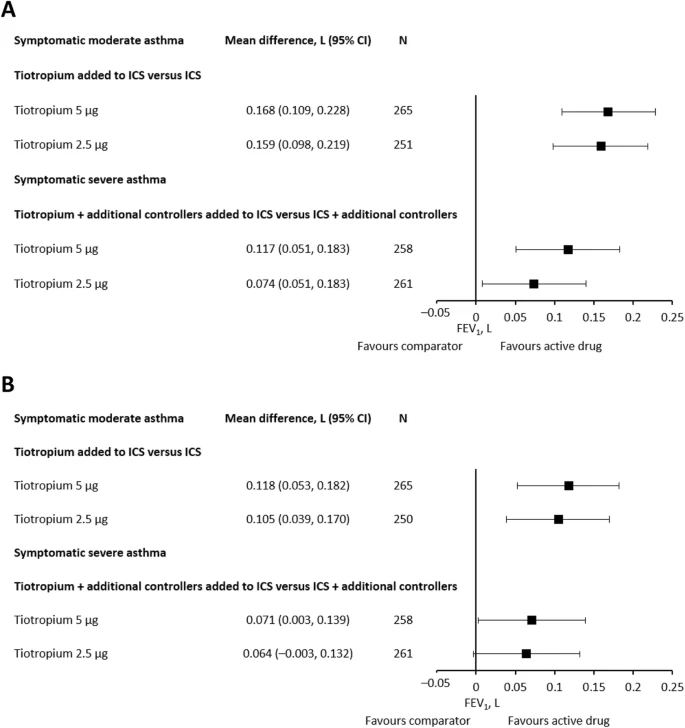Research – Open Access
Christian Vogelberg, Stanley Goldstein, LeRoy Graham, Alan Kaplan, Alberto de la Hoz & Eckard Hamelmann
Respiratory Research volume 21, Article number: 19 (2020)
Abstract
Diagnosing and treating asthma in paediatric patients remains challenging, with many children and adolescents remaining uncontrolled despite treatment. Selecting the most appropriate pharmacological treatment to add onto inhaled corticosteroids (ICS) in children and adolescents with asthma who remain symptomatic despite ICS can be difficult. This literature review compares the efficacy and safety of long-acting β2-agonists (LABAs), leukotriene receptor antagonists (LTRAs) and long-acting muscarinic antagonists (LAMAs) as add-on treatment to ICS in children and adolescents aged 4–17 years.
A literature search identified a total of 29 studies that met the inclusion criteria, including 21 randomised controlled trials (RCTs) of LABAs versus placebo, two RCTs of LAMAs (tiotropium) versus placebo, and four RCTs of LTRA (montelukast), all as add-on to ICS. In these studies, tiotropium and LABAs provided greater improvements in lung function than LTRAs, when compared with placebo as add-on to ICS. Although exacerbation data were difficult to interpret, tiotropium reduced the risk of exacerbations requiring oral corticosteroids when added to ICS, with or without additional controllers. LABAs and LTRAs had a comparable risk of asthma exacerbations with placebo when added to ICS. When adverse events (AEs) or serious AEs were analysed, LABAs, montelukast and tiotropium had a comparable safety profile with placebo.

In conclusion, this literature review provides an up-to-date overview of the efficacy and safety of LABAs, LTRAs and LAMAs as add-on to ICS in children and adolescents with asthma. Overall, tiotropium and LABAs have similar efficacy, and provide greater improvements in lung function than montelukast as add-on to ICS. All three controller options have comparable safety profiles.
Lay summary
It can be difficult for doctors to decide which treatment is best to prescribe to children and adolescents with asthma to help reduce their symptoms. In this review, we weigh up the available evidence on three asthma treatments that work in different ways. We looked at two types of inhalers and one type of medicine that is either swallowed as a tablet or granules. The two inhalers helped to improve lung function more than the oral medication, which may be due to their different modes of action. All three treatments were found to be as safe as a placebo.
